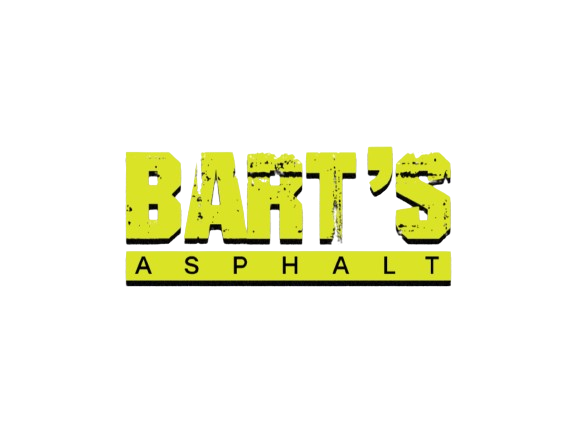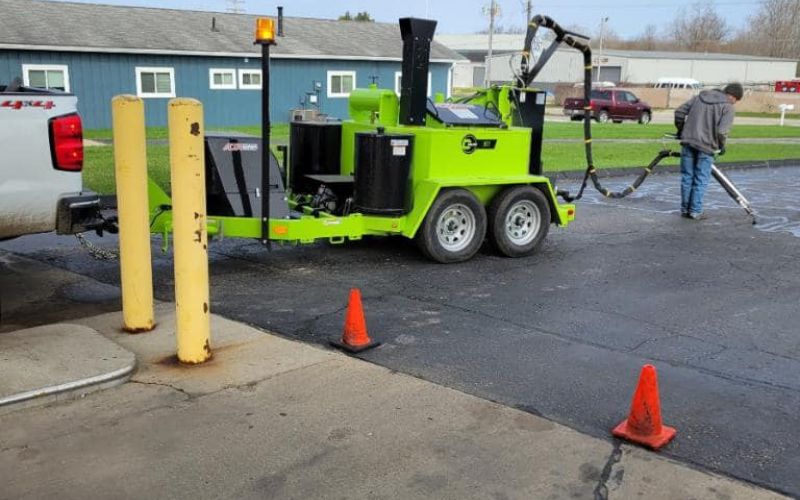Commercial properties in Michigan face a complex and challenging environment that can quickly transform pristine asphalt surfaces into maintenance-intensive landscapes. From the bustling corridors of Lansing to the high-traffic streets of Ann Arbor, commercial asphalt undergoes constant stress that demands strategic, proactive repair approaches. The harsh realities of Michigan’s climate, combined with intense commercial traffic, create a perfect storm of challenges that can rapidly degrade even the most well-constructed surfaces.
Understanding asphalt maintenance is more than a simple maintenance task – it’s a critical business strategy that directly impacts property value, safety, and operational efficiency. Each crack, pothole, and surface imperfection tells a story of environmental stress, traffic impact, and maintenance history. For business owners and property managers, this means developing a sophisticated approach to asphalt care that goes far beyond simple patch work and becomes a comprehensive asset management strategy.
The economic implications of asphalt maintenance are significant. A well-maintained parking lot or roadway is not just an aesthetic choice, but a fundamental business asset that protects your property’s value, reduces liability risks, and creates a positive first impression for customers and clients. The difference between reactive and proactive maintenance can mean tens of thousands of dollars in long-term savings.
Understanding Michigan's Unique Asphalt Challenges
Michigan’s climate is a relentless adversary to asphalt surfaces, creating a complex environment of constant material stress. The state experiences some of the most dramatic temperature fluctuations in the United States, with winter temperatures plummeting well below freezing and summer heat intensifying UV radiation. This extreme variability creates a cyclical stress that gradually breaks down asphalt’s molecular structure.
The freeze-thaw cycle is particularly destructive. Water penetrates microscopic cracks in the asphalt, then expands as it freezes, creating increasingly larger openings. This process occurs dozens of times each winter, with temperatures repeatedly crossing the freezing point. Each cycle acts like a microscopic wedge, gradually destroying the asphalt’s structural integrity from within.
Road salt and chemical deicers compound the problem, creating a corrosive environment that accelerates surface deterioration. While essential for winter safety, these chemicals attack the binding agents in asphalt, breaking down its molecular structure and accelerating aging. The chemical interaction between salt, water, and asphalt creates a complex degradation process that goes far beyond simple surface damage.
Heavy vehicle traffic intensifies these environmental challenges. Commercial corridors experience constant loading from delivery trucks, buses, and other significant vehicles. Each pass creates micro-damages that accumulate over time, gradually compromising the asphalt’s structural integrity. The weight and frequency of these vehicles create additional stress points that accelerate surface breakdown.
Different commercial zones experience unique challenges. Industrial corridors face heavy machinery and chemical exposures. Retail areas deal with constant traffic and frequent turning movements. Government and university districts have their own specific traffic patterns and maintenance constraints. Understanding these nuanced differences is crucial for developing targeted repair strategies.
Identifying Common Asphalt Damage in Commercial Corridors
Commercial asphalt damage manifests in a complex array of patterns, each indicating specific underlying issues. Potholes represent one of the most visible and dangerous forms of deterioration, but they are merely the final stage of a long-term degradation process. These cavities begin as microscopic surface cracks that allow water infiltration, which then expands during freeze-thaw cycles, creating increasingly larger and more destructive openings.
Alligator cracking – a distinctive pattern of interconnected cracks resembling an alligator’s skin – signals more severe structural issues. This type of damage suggests problems that extend far beyond the surface, potentially involving the base layer of the pavement. It typically indicates systematic failure of the asphalt’s structural integrity, often resulting from prolonged water infiltration, inadequate initial construction, or extreme loading conditions.
Longitudinal and transverse cracking tells a different story, often related to temperature-induced expansion and contraction or underlying base layer problems. These linear cracks can develop from multiple sources: thermal stress, structural weakness, or improper initial installation. In Michigan’s challenging climate, these cracks become entry points for water and additional stress, quickly expanding into more significant damage.
Surface oxidation presents a more insidious form of deterioration. As asphalt ages, it loses its flexibility, becoming increasingly brittle and prone to cracking. This process is dramatically accelerated by Michigan’s extreme climate, with UV radiation and temperature variations breaking down the asphalt’s molecular structure. The rich black surface gradually fades to a dry, gray appearance – a clear sign of advancing material degradation.
Diagnostic Approaches to Asphalt Damage Assessment
Professional asphalt repair begins with a comprehensive diagnostic approach that transcends traditional visual inspection. Modern technologies now provide unprecedented insights into asphalt condition, allowing for precise, data-driven maintenance strategies. Infrared scanning can detect subsurface variations invisible to the naked eye, revealing potential structural issues before they become critical failures.
Ground-penetrating radar represents a revolutionary diagnostic tool, providing a detailed look into the pavement’s base layers. This technology can identify potential drainage issues, base layer instability, and hidden structural weaknesses that would otherwise go undetected. By creating a comprehensive three-dimensional understanding of the asphalt’s condition, professionals can develop targeted repair strategies that address root causes.
A thorough assessment considers multiple complex factors:
- Detailed surface condition analysis
- Base layer stability and composition
- Drainage patterns and potential water infiltration
- Specific traffic load characteristics
- Environmental exposure and historical stress factors
- Potential underlying geological or construction issues
The ultimate goal extends far beyond simple damage repair. Diagnostic approaches aim to understand the complete lifecycle of the asphalt surface, developing holistic strategies that prevent future deterioration and optimize long-term performance.
Preventative Maintenance Strategies
Preventative maintenance represents the most cost-effective approach to asphalt management. A well-implemented program can extend the life of commercial asphalt surfaces by 25-50%, dramatically reducing long-term repair and replacement costs. This strategy transforms asphalt maintenance from a reactive expense to a proactive asset protection approach.
Sealcoating stands as the cornerstone of preventative maintenance. This protective layer creates a comprehensive barrier that shields the asphalt from environmental damage, UV radiation, and chemical exposure. Modern sealcoating technologies offer advanced protection, using specialized polymers and additives that provide superior durability and performance. The application process itself is a precise science, requiring careful surface preparation and expert application techniques.
A comprehensive preventative maintenance program involves multiple strategic components:
- Annual comprehensive inspections using advanced diagnostic technologies
- Timely crack sealing to prevent water infiltration
- Regular sealcoating applications
- Proactive drainage management
- Strategic traffic flow planning to minimize concentrated stress points
- Detailed record-keeping and predictive maintenance scheduling
Climate-specific considerations are crucial in Michigan. The maintenance schedule must account for the state’s extreme seasonal variations, with specific strategies for winter preparation and summer maintenance. This might involve specialized winter-ready sealants, targeted crack repairs before the freeze-thaw cycle, and comprehensive spring assessments.
Technology and Innovation in Asphalt Repair
The asphalt repair industry is experiencing a technological revolution that is transforming how commercial properties approach pavement maintenance. Innovative materials now offer unprecedented levels of durability and performance, with polymer-modified mixes providing greater flexibility and resistance to environmental stress.
Infrared repair technology represents one of the most significant recent innovations. This approach allows for seamless repairs that perfectly blend with existing surfaces, minimizing visual disruption and creating more durable repair solutions. The technology uses targeted heating to soften existing asphalt, allowing for precise material integration that creates a virtually invisible repair.
Eco-friendly repair solutions are emerging as a critical area of innovation. These approaches focus on:
- Recycled material integration
- Reduced carbon footprint repair techniques
- Sustainable material development
- Longer-lasting, more environmentally responsible repair approaches
Advanced sensor technologies now allow for real-time pavement condition monitoring. These systems can detect early signs of potential damage, enabling predictive maintenance strategies that address issues before they become critical failures.
Economic Considerations
The financial landscape of asphalt maintenance is far more complex than simple repair costs. For commercial properties in Michigan, asphalt management represents a sophisticated economic strategy that directly impacts long-term property value, operational efficiency, and business performance. The true cost of asphalt maintenance extends far beyond immediate repair expenses, encompassing a broad range of economic factors.
Comparative cost analysis reveals stark economic realities:
- Reactive repair approach: $20-$50 per square foot
- Proactive maintenance strategy: $5-$10 per square foot
- Complete pavement replacement: $75-$100 per square foot
These figures demonstrate the profound financial benefits of a strategic, preventative approach. Businesses that invest in regular maintenance can potentially save up to 70% on long-term asphalt-related expenses. This goes beyond direct repair costs, encompassing reduced liability risks, improved property value, and minimized operational disruptions.
Insurance and liability considerations add another critical economic dimension. Well-maintained parking lots and roadways significantly reduce the risk of vehicle damage claims, potential personal injury lawsuits, and other liability issues. A professionally maintained asphalt surface communicates a commitment to safety and professionalism that can directly impact a business’s reputation and financial standing.
The economic impact extends to broader business performance. A well-maintained parking lot creates a positive first impression, potentially driving customer engagement and retention. For retail, hospitality, and service-based businesses, the appearance and functionality of their external spaces can be a critical factor in customer decision-making.
Regional Considerations for Michigan Corridors
Michigan’s diverse commercial landscape presents unique challenges that require specialized approach to asphalt maintenance. From the urban corridors of Detroit to the university districts of Ann Arbor and the government centers of Lansing, each region demands a nuanced understanding of local conditions, traffic patterns, and environmental stressors.
Urban commercial corridors experience intense, concentrated traffic that creates specific maintenance challenges. Downtown areas with heavy commercial and municipal traffic require more frequent and comprehensive maintenance approaches. The constant movement of delivery vehicles, public transportation, and high-volume personal traffic creates unique wear patterns that demand specialized repair strategies.
University areas present their own distinctive maintenance considerations. Campuses like the University of Michigan experience dramatic seasonal variations in traffic, with periods of intense use followed by relative quiet. Maintenance strategies must account for these cyclical patterns, potentially leveraging slower periods for more comprehensive repair work.
Industrial corridors require an entirely different approach. These areas experience heavy machinery traffic, potential chemical exposures, and unique loading conditions that can rapidly degrade asphalt surfaces. Specialized materials and repair techniques are essential to address the specific challenges of these high-stress environments.
Bart's Asphalt Approach to Commercial Corridor Repair
Our approach to commercial asphalt repair represents the culmination of decades of local expertise, cutting-edge technology, and a deep understanding of Michigan’s unique commercial landscape. We go far beyond simple repair services, offering comprehensive asphalt management strategies that protect and enhance our clients’ critical infrastructure.
Our diagnostic process begins with a comprehensive site assessment that goes beyond surface-level inspection. Utilizing advanced technologies like infrared scanning and ground-penetrating radar, we create a complete understanding of your asphalt’s condition. This allows us to develop targeted, cost-effective repair strategies that address both immediate needs and long-term performance.
Key differentiators of our approach include:
- Local expertise specific to Michigan’s challenging environment
- Advanced diagnostic technologies
- Customized repair strategies for different commercial zones
- Commitment to minimal business disruption
- Use of premium, environmentally responsible materials
- Comprehensive maintenance planning
We understand that each commercial property is unique. Our team works closely with clients to develop tailored solutions that meet specific operational needs, budget constraints, and long-term infrastructure goals.
Conclusion
Effective asphalt maintenance is a sophisticated strategy that goes far beyond simple repairs. For Michigan commercial properties, it represents a critical approach to protecting infrastructure, ensuring safety, and managing long-term economic investments. The complex interplay of environmental challenges, traffic demands, and technological innovations requires a comprehensive, strategic approach.
Successful asphalt management is about understanding the entire lifecycle of your pavement – from initial installation to ongoing maintenance and eventual renewal. It requires a proactive mindset, advanced technical knowledge, and a deep understanding of local environmental conditions.
Frequently Asked Questions
Q: How often should our commercial asphalt be professionally assessed? A: We recommend comprehensive professional inspections annually, with additional spot checks after extreme weather events or significant changes in traffic patterns.
Q: Can you repair our asphalt without completely shutting down our business? A: Absolutely. We specialize in phased repair approaches that maintain business accessibility throughout the repair process, minimizing operational disruptions.
Q: What makes your repair approach different from other contractors? A: Our method combines advanced diagnostic technologies, locally engineered repair techniques, and a deep understanding of Michigan’s unique environmental challenges. We provide a comprehensive approach that goes beyond simple surface repairs.
Ready to protect your commercial asphalt investment? Contact Bart’s Asphalt for a comprehensive evaluation and customized repair strategy that will safeguard your property’s infrastructure for years to come.



